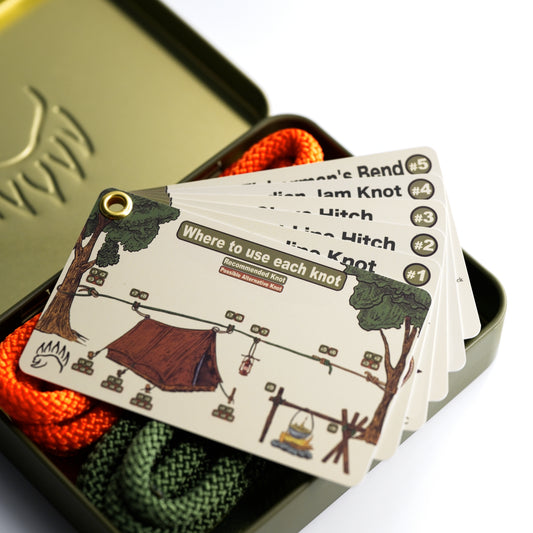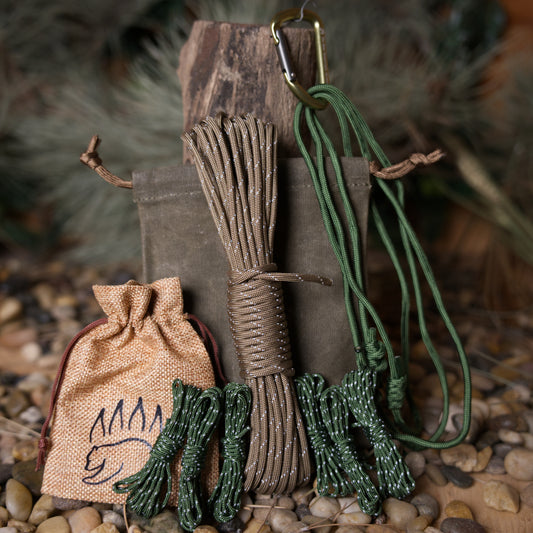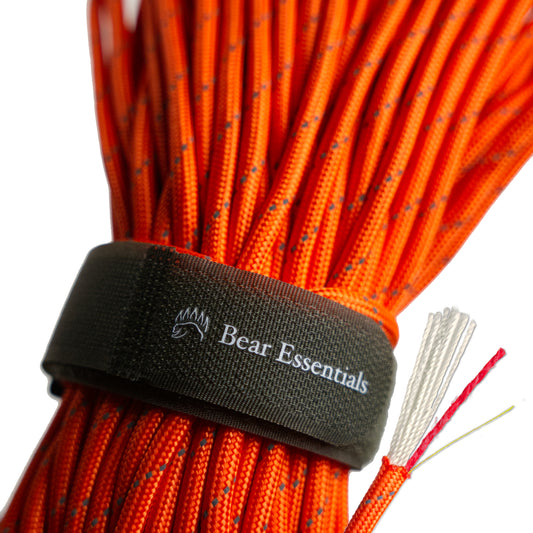How to Tie the Double Dragon Bend
Usage
The Double Dragon Bend is commonly used to join two ropes, particularly in boating and fishing for its strength and reliability. Compared to the Double Fisherman’s Bend, which can jam under heavy loads, the Double Dragon Bend is easier to untie while maintaining similar security. Its robust structure suits marine and outdoor tasks, but it requires practice to tie correctly. This knot is ideal for creating strong connections, though it’s bulkier than simpler bends.
Why Learn the Double Dragon Bend?
Its secure design ensures strong rope connections. This knot is a dependable choice for tasks requiring durable joins in outdoor and utility settings.
- ✔ High strength: Holds firm under heavy loads without slipping.
- ✔ Easy to untie: Releases smoothly even after significant strain.
- ✔ Versatile use: Suits boating, fishing, and camping rope connections.
- ✔ Reliable structure: Extra tuck enhances security over simpler bends.
- ✔ Adaptable: Works with ropes of similar or slightly different diameters.
Common Uses
-
Boating/Marine
- ✔ Joins mooring lines for secure docking.
- ✔ Connects ropes for towing or rigging.
-
Fishing
- ✔ Links fishing lines for extended length.
- ✔ Secures leader to main line in heavy setups.
-
Camping
- ✔ Connects ropes for shelter ridgelines.
- ✔ Joins cordage for gear repairs.
-
Utility
- ✔ Ties ropes for bundling items at home.
- ✔ Connects cords for temporary fixes.
ABOK Number
(Ashley Book of Knots)
Other Names
Category
|
Notable Features
- Strong and Secure: Handles moderate to heavy loads reliably.
- Quick Release: Easier to untie than many strong bends.
- Rope Compatibility: Performs well with equal or similar diameters.
How to Tie
- Form a loop with the first rope’s working end, wrapping it twice around the standing part.
- Pass the working end of the first rope through the two loops, pulling to create a tight knot.
- Repeat with the second rope, mirroring the structure to interlock with the first knot.
- Tuck the working end of each rope back through its respective bight for added security.
- Pull both standing ends to tighten the knot, ensuring even tension.
Tips:
- Keep wraps snug during tying to ensure a secure knot.
- Use ropes of similar diameter for best results.
- Practice untying after load to confirm ease of release.
Variations
Double Dragon Loop Knot (Mid Line) vs. Double Dragon Bend
- Pros: Creates a secure mid-line loop, ideal for anchoring or tensioning.
- Cons: Not designed for joining two ropes like the bend.
Double Dragon Loop Knot Rope End Method vs. Double Dragon Bend
- Pros: Forms a strong end loop for anchoring or clipping.
- Cons: Limited to loop creation, not suitable for rope-to-rope connections.
Similar Knots
Double Sheet Bend vs. Double Dragon Bend
- Pros: Simpler to tie and effective for unequal rope sizes.
- Cons: Less secure under heavy loads and prone to slipping.
Zeppelin Bend vs. Double Dragon Bend
- Pros: Easier to untie and less bulky for similar strength.
- Cons: Slightly more complex to tie correctly under pressure.
History
The Double Dragon Bend likely evolved from modern knot-tying innovations, building on traditional bends like the Sheet Bend. Its structure, with an extra tuck for security, reflects adaptations for demanding outdoor tasks, particularly in boating and fishing. While not listed in The Ashley Book of Knots, its similarity to the Double Sheet Bend suggests a shared lineage, refined for contemporary use in marine and utility applications.
Security Level
The Double Dragon Bend is highly reliable for joining ropes under moderate to heavy loads, maintaining strength without slipping. Its extra tuck ensures security, and it remains easy to untie after strain. For slippery ropes, a stopper knot on each tail can enhance stability. See ashley stopper knot.
Downsides
- Requires practice to tie efficiently and correctly.
- Takes up more space than simpler bends like the Sheet Bend.
FAQ
-
Is the Double Dragon Bend strong enough for heavy loads?
Yes, it’s robust for boating and fishing when tied correctly, but always check rope condition. -
What ropes work best for the Double Dragon Bend?
Nylon or polyester ropes of similar diameter ensure optimal strength and security. -
How does the Double Dragon Bend compare to the Double Fisherman’s Bend?
It’s easier to untie after load but slightly bulkier and less familiar. -
Can the Double Dragon Bend be used in climbing?
It’s not typically used for climbing due to its bulk; other bends like the Figure Eight Bend are preferred. -
Why choose the Double Dragon Bend over the Zeppelin Bend?
It’s equally secure but better for ropes with slight diameter differences.
Important Notes on Safety
- Common failure points include loose wraps or mismatched rope sizes, which can reduce security.
- Always verify the knot is tight and ropes are compatible before use.
- Inspect ropes for wear or damage before tying.
- Ensure both tucks are secure to prevent slipping.
- Practice tying in low-stakes settings to build confidence.









